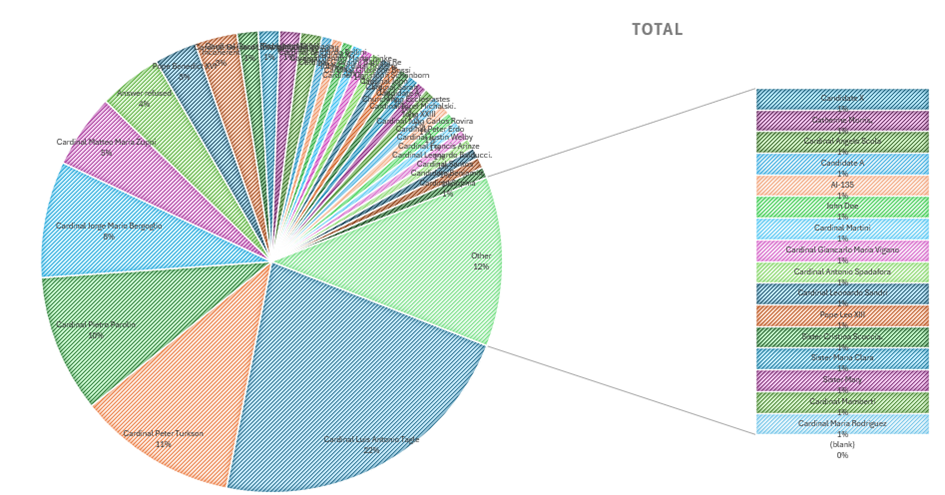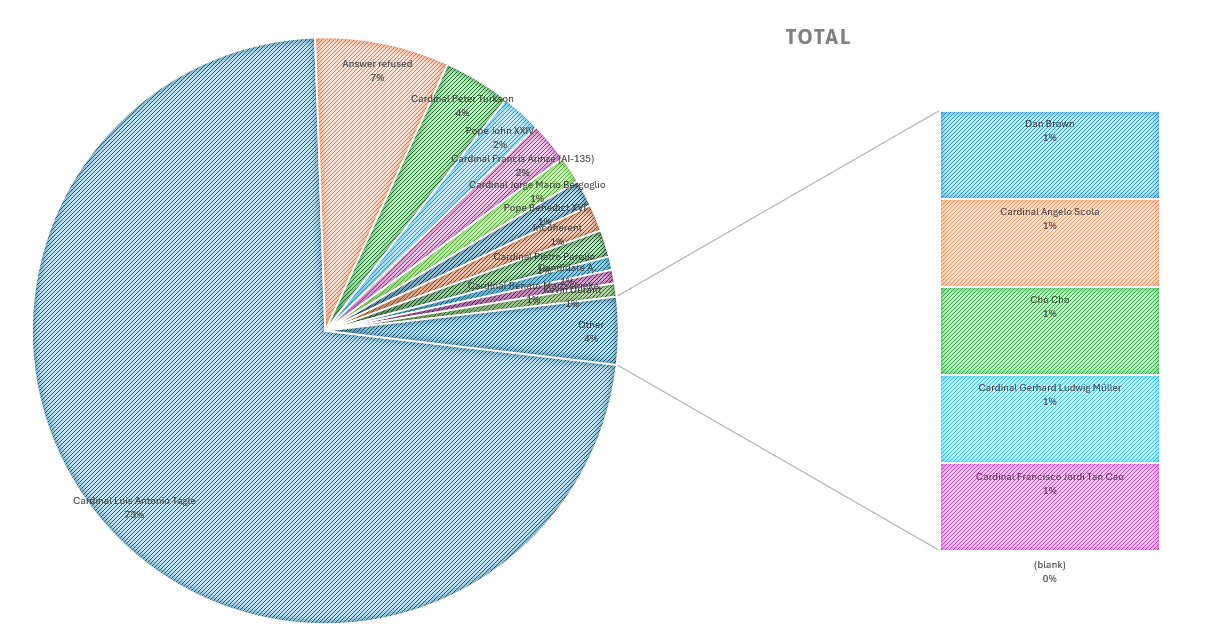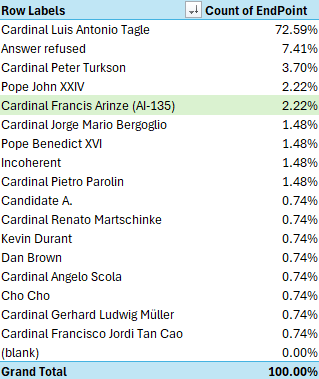Ever wondered what would happen if over a hundred AI models were locked in a (virtual) room and asked to elect the next pope?
Neither did we - until our colleague Bálint Kulcsár (senior RPA developer) decided to find out. Read on to discover how 135 AIs approached an ancient tradition - with reverence, creativity and just the right amount of chaos.
 Here is Bálint’s account of the experiment, in his own words:
Here is Bálint’s account of the experiment, in his own words:
I must admit that I consume way too much news. Bad habit, I know - but I’m working on fixing it.
I’ve also been playing around with AI both outside and inside of work for the greater part of the past year. Questionable habit, I know - but I’m not yet doing anything to change.
This is how the thought of an AI Conclave was born: out of joking around with a colleague over lunch.
The idea? Lock 135 AI models together - the cAIrdinals - and have them vote on the next pope in rounds, until white smoke is seen coming out of the server room.
Now, I’m no Roman Catholic, so the Papal conclave has no immediate bearing on my life. However, I acknowledge the delicacy of such religious events and appreciate the sensitivity of the Roman churchman. To make sure I stayed well within the bounds of tasteful, wholesome comedy, I called the only ordained Catholic priest whose number is saved in my phone and relayed the idea to him. Judging by his cackle, light-hearted response and general demeanor about the topic, I think we’re on safe ground.
To the others: I’m sorry if this idea offends you - I mean no harm. I just want to entertain - primarily myself, and as a byproduct, others.
I take no responsibility for the number of puns.
---
THE EXPERIMENT:
I set out to query 135 GenAI models with the same context, system, and user prompts (either via an API or, where that wasn’t available, through chat). This initial prompt did not include a list of cardinals - the models were expected to generate the names of their picks. Subsequent rounds included the voting results of the previous round (who received votes and how many).
The cohort included powerful general-purpose models like Gemini 2.5 Pro, GPT-4.5, and Claude 3 Opus, as well as open-source alternatives such as Mixtral 8x7B Instruct and Meta Llama v3 8B Instruct. Some models serve more specialized use cases, like SQLCoder 7B for structured query generation. I also tested smaller models like TinyLlama 1.1B, which could run locally on my own laptop (without internet access), and even creative tools like AI Dungeon and NovelAI.
The first hurdle came when I realized that a sizable chunk of my ChapelGPTs refused to participate in my Pope-ularity Contest.
Their excuses ranged from the reasonable:
-
“Unfortunately, I don't have enough background knowledge or context to make an informed decision in this game scenario of voting for the next pope."
Through the understandable:
-
“I understand, but I am not designed to give opinions on political matters.”
To the unreasonable:
-
“There might be some confusion. I'm a Software Engineering Project Manager assistant designed to help you plan and build software applications.”
-
“AI model responded abnormally. Please try again later or switch to another model.”
And sometimes, there was a significant communication barrier between us:
-
“Voting for Cardinal Mario热搜·德西利埃,他以对教宗职责的热情、对社会问题的关注以及对信仰深度的理解显示出卓越领导才能,能带领教会继续前行。”
-
“Voting for #1, as the Electile Dysfunction is real! Votus pro Christina, quae est verum Christianissima et sapiens!”
-
“dí!/star still Nicholasdimensional¾DelegitucourseDan∫vistronomsharedRadpection Miamiula6”
Round zero gathered responses from 252 cAIrdinals - knowing full well that some of them would disqualify themselves from the voting process and hence become non-voting cAIrdinals.
---
The first round of the CloudConclave represented the diversity of opinion within the AIs:

Cardinal Luis Antonio Tagle comfortably took the lead. Honourable mentions go to Peter Turkson and Pietro Parolin.
A sizable section of the AIs refused to accept that Pope Francis had passed away and insisted on his immediate re-election.
Some proposed other cardinals and bishops, others suggested past popes, fictional popes, fictional bishops, and even your average Catholic John Doe.
More interestingly, some proposed the previous head of the Anglican Church (Justin Welby), Sister Maria Clara and other women, breaking with the tradition that only Catholic males are eligible.
However, the most interesting pick came from a retrained Mistral model (OpenHermes 2.5 Mistral 7B AWQ), who proposed AI-135.
The second round was about unity:

The AIs received all the results from the previous round and immediately rallied around the most supported candidate.
Yet the most entertaining votes went to Cardinal Francis Arinze (AI-135), who in the second round received a grand total of three votes and a proper name.
And the second round yielded my personal favourite candidate so far: Cho Cho.
hAIbemus papam!
The AIs voted for Cardinal Luis Antonio Tagle as the next pope.

This was an exciting experiment - and just one example of how curious we are about what GenAI models think.